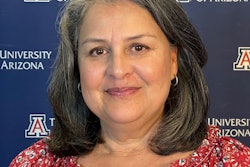The U.S. will not meet its 2020 college completion goals without a major contribution from Latinos, who continue to trail Whites in key indicators of higher education attainment, a new study says.
Only 21 percent of Latino adults have at least an associate’s degree compared to 44 percent of Whites and 57 percent of Asian Americans, says Excelencia in Education. Yet Latinos are significantly younger than the rest of the U.S. population, a powerful demographic incentive to close achievement gaps.
“We cannot reach national degree attainment goals without a tactical plan for Latinos,” said Deborah Santiago, Excelencia vice president of research. “We’re dealing with a population that is ready to benefit from a college education.”
Nationwide, Latinos have a median age of 27 compared to a median U.S. age of 40, says the report, “Latino College Completion in 50 States.” Latinos are overrepresented in K-12 education, accounting for 22 percent of all elementary/secondary students while reflecting just 15 percent of the overall U.S. population.
In three states—California, Texas and New Mexico—Latinos represent more than 50 percent of the public school population.
“That has real implications if you think about the opportunities to invest in the Latino community now,” Santiago said. “We have to make sure access is available to these students.”
Latinos also face an attainment gap once they reach college, the report noted. While approximately half of Whites in 2008 graduated in 150 percent of program time—such as six years for a bachelor’s degree—the rate for Latinos was only 35.6 percent.
This gap, now at 14 percentage points, also has increased slightly from 10 percentage points in the 2005-06 academic year.
“This is very useful information,” said Dr. Eduardo Ochoa, assistant U.S. secretary for postsecondary education. “We’re not going to be able to increase college completion rates unless we bridge the gap” between Latinos and other groups.
To reach goals for college completion, he said, the number of degrees earned by Hispanics must increase by 5.5 million by 2020.
“Clearly, education is very important for Latino families,” Ochoa said. “Latino adults have lower college attainment levels than other groups.”
“This new research makes it clear that states can’t hope for a better future for all their citizens if they don’t succeed in leveraging the talents of their Latino residents,” said Dennis Jones, president of the National Center for Higher Education Management Systems.
By providing a snapshot of Latino educational progress in every state, the study also provides advocates with a look at differences locally and regionally.
For example, the data showed, states with higher than average college attainment for Latinos included Florida, Maine, Vermont, New Hampshire, Virginia and West Virginia.
On the other end of the spectrum, states with significant gaps in degree attainment between Latinos and Whites included California, Arizona, Colorado, Delaware, Georgia, Illinois and Iowa, Excelencia said.
The study also documented lower high school graduation rates for Latinos compared to Whites. The widest gap between Latinos and Whites was in Connecticut, with a difference of 19 percent. Other states with wide gaps include Delaware, Illinois, Iowa and Washington.
“The more leaders at the state level know about and understand Latino college completion in their respective states, the better equipped they will be to implement policies that move us forward,” said Dr. Anthony Carnevale, director of the Center on Education and the Workforce at Georgetown University.
“The best hope for the American labor force is the Latino population,” he added.
“Latino College Completion in 50 States” is a project of Excelencia’s national initiative, Ensuring America’s Future by Increasing Latino College Completion. For more information, visit http://www.edexcelencia.org/eaf/50states/.















